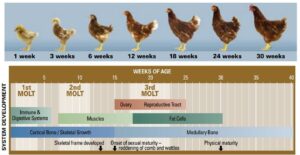It is challenging to provide an exact and up-to-date number for the current rate of species on Earth. The total number of species on our planet is not precisely known and is a subject of ongoing research. Scientists estimate that there could be millions of species on Earth, but the majority of them remain undiscovered and undescribed, particularly among smaller and less-studied organisms like insects, fungi, and microorganisms.
Thank you for reading. Don't forget to subscribe & share!
Efforts to catalog and describe Earth’s biodiversity continue, with scientists discovering and formally describing new species regularly. Many of these discoveries are made in remote or poorly explored regions, deep ocean environments, and through genetic analysis.
It’s important to note that the rate of species discovery and documentation varies across taxonomic groups and regions. Some groups, like mammals and birds, are relatively well-studied, while others, such as certain insect groups, remain largely undocumented.
Additionally, the rate of species extinction is a matter of concern, as many species face threats due to habitat loss, climate change, pollution, and other human activities. These threats can lead to the loss of species before they are even discovered or formally described. To get the most accurate and up-to-date information on the current rate of species discovery and the state of Earth’s biodiversity, it is advisable to refer to scientific publications, databases, and organizations that specialize in biodiversity research and conservation. Keep in mind that ongoing scientific research continues to advance our understanding of Earth’s diverse and interconnected ecosystems.
Present Rate of Species—Biodiversity and Extinction
Understanding Biodiversity: Biodiversity refers to the variety of life — all plants, animals, fungi, and microorganisms on Earth.Scientists estimate there are around 8.7 million species of living organisms, but only about 1.5–2 million have been formally described.
Most species are still unknown to science, especially insects, deep-sea creatures, and microorganisms.
Present Rate of New Species Discovery
Every year, about 15,000–20,000 new species are discovered and described.
Most newly described species are insects, microbes, and marine organisms.
However, the rate of discovery is slower than the rate of species extinction.
Example: In 2023, over 17,000 new species were officially recorded, including fish, frogs, and many insects.
Present Rate of Extinction
Scientists estimate the current extinction rate is 100 to 1,000 times higher than the natural background rate.
Background rate = normal rate of extinction before human impact (around 1–5 species per year).
Today’s rate = estimated dozens to hundreds of species going extinct every day.
Main causes:
Habitat loss
Climate change
Pollution
Overexploitation
Invasive species
Fact: Some biologists suggest we are living through the Sixth Mass Extinction — largely driven by human activity.
Numbers at a Glance
| Aspect | Data (approximate) |
| Total estimated species | 8.7 million |
| Species formally described | 1.5–2 million |
| New species discovered yearly | 15,000–20,000 |
| Background extinction rate | 1–5 species/year |
| Current extinction rate | 100–1,000× faster than natural rate |
Biodiversity is declining rapidly despite the discovery of new species. Tropical forests, coral reefs, and freshwater habitats are hotspots of species discovery and also extinction hotspots. Conservation efforts are critical to slow down the extinction rate and protect unknown species.









